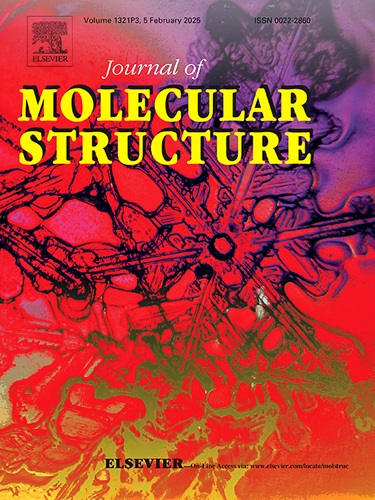Optimizing adamantane derivatives for enhanced EGFR inhibition in MCF-7 breast cancer cells
IF 4
2区 化学
Q2 CHEMISTRY, PHYSICAL
引用次数: 0
Abstract
Epidermal growth factor receptor (EGFR) is a key target in breast cancer (BC) treatment due to its significant role in disease progression. This study aims to synthesize novel heterocyclic compounds by tailoring adamantane with pyrazoline followed by piperazines to target EGFR in breast cancer cells. Synthesis of the heterocyclic compounds was performed by Claisen–Schmidt reaction followed by cyclization and concludes with substitution by secondary amines. Structure of the lead compound 1-(3-((3r,5r,7r)-adamantan-1-yl)-5-(4-nitrophenyl)-4,5-dihydro-1H-pyrazol-1-yl)-2-(4-(2-nitrophenyl)piperazin-1-yl)ethenone (6c) is confirmed by HRMS, 1H & 13C NMR, IR and Single crystal XRD. In silico docking studies were performed to investigate the molecular interactions of the compound 3, 4 & 6c with the EGFR binding site and to calculate their binding energies. Molecular dynamics simulations were conducted to explore stability of protein-ligand complex for compound 6c within the active site groove of EGFR protein in comparison with its precursors. Additionally, cytotoxic effects of these compounds against MCF-7 breast cancer cells were evaluated using IC-50 assays. Among the synthesized compounds, 6c exhibited significant cytotoxic effects against MCF-7 cells, with IC-50 values of 1.22 μM. Compound 6c had binding energy of -8.6 kcal/mol, indicating strong interactions within the EGFR binding site indicating their anti-breast cancer potential.

求助全文
约1分钟内获得全文
求助全文
来源期刊

Journal of Molecular Structure
化学-物理化学
CiteScore
7.10
自引率
15.80%
发文量
2384
审稿时长
45 days
期刊介绍:
The Journal of Molecular Structure is dedicated to the publication of full-length articles and review papers, providing important new structural information on all types of chemical species including:
• Stable and unstable molecules in all types of environments (vapour, molecular beam, liquid, solution, liquid crystal, solid state, matrix-isolated, surface-absorbed etc.)
• Chemical intermediates
• Molecules in excited states
• Biological molecules
• Polymers.
The methods used may include any combination of spectroscopic and non-spectroscopic techniques, for example:
• Infrared spectroscopy (mid, far, near)
• Raman spectroscopy and non-linear Raman methods (CARS, etc.)
• Electronic absorption spectroscopy
• Optical rotatory dispersion and circular dichroism
• Fluorescence and phosphorescence techniques
• Electron spectroscopies (PES, XPS), EXAFS, etc.
• Microwave spectroscopy
• Electron diffraction
• NMR and ESR spectroscopies
• Mössbauer spectroscopy
• X-ray crystallography
• Charge Density Analyses
• Computational Studies (supplementing experimental methods)
We encourage publications combining theoretical and experimental approaches. The structural insights gained by the studies should be correlated with the properties, activity and/ or reactivity of the molecule under investigation and the relevance of this molecule and its implications should be discussed.
 求助内容:
求助内容: 应助结果提醒方式:
应助结果提醒方式:


